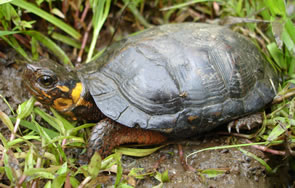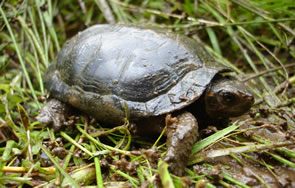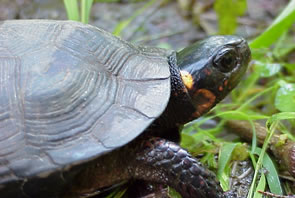
Bog Turtle
Glyptemys muhlenbergii
Photo by M. Dorcas
Description: This is a small turtle with a brown to black carapace (top of shell). The plastron (bottom of shell) is hingeless and usually dark brown to black. The most prominent feature is the bright orange to yellow blotch on either side of the head and neck, though these blotches may be obscured if the turtle’s head is withdrawn. This is the smallest species of turtle in the United States and the second smallest in the world with adults typically measuring only 3 to 4 inches (7.5-10 cm) in carapace length.
Feeding/Diet: Bog turtles are omnivorous but prefer insects, snails, and other small animals. They are also known to eat carrion, berries, and seeds.
Activity/Behavior: This is a shy turtle which spends much of its time buried in mud. When not buried, they can sometimes be found basking on tussock sedges and other clumps of vegetation.
Habitat/Range: Bog turtles prefer bogs, fens, marshy meadows, and other wetlands with emergent vegetation, primarily in the mountains. Spring seepages and associated mucky soils are often present wherever this species occurs.
Reproduction: Bog turtles mate in the spring and lay eggs in June or July. They usually lay their eggs in clumps of vegetation, often Sphagnum moss and tussock sedges.
Miscellaneous: This species is listed as a threatened species both in the state of North Carolina and by the World Conservation Union. Habitat destruction and fragmentation are major threats to this species. Collection for the pet trade can also be a major threat to bog turtles.
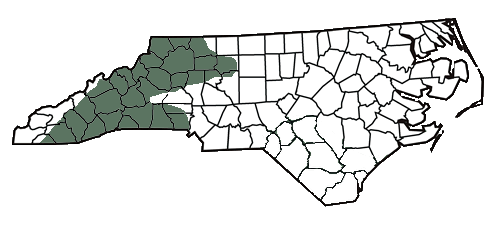
The shaded region represents the range of the bog turtle in North Carolina.
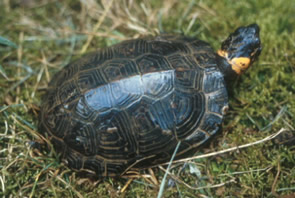
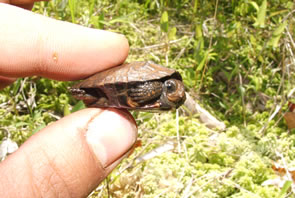
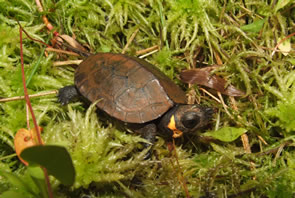
Photo by W. Anderson
Photo by W. Anderson
